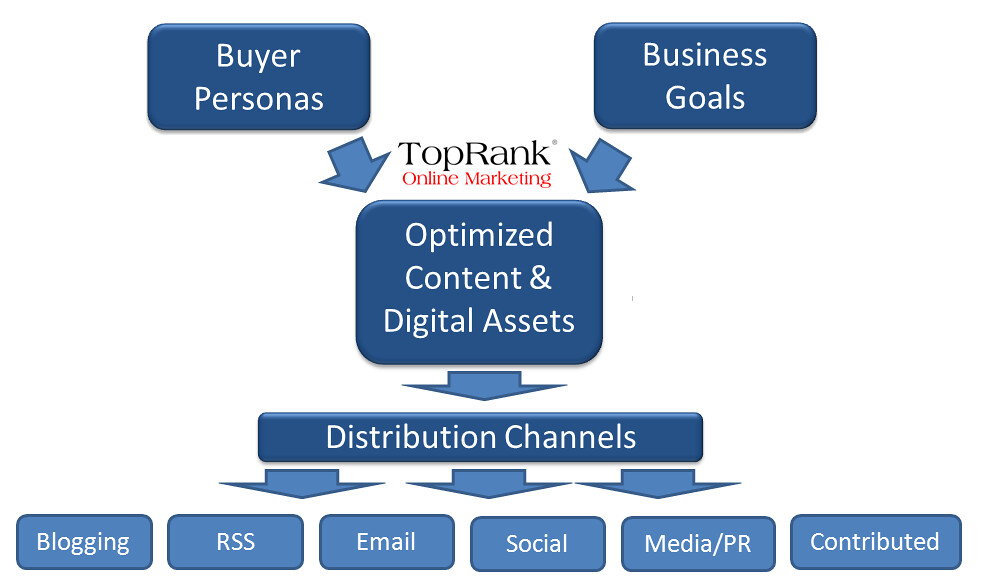Why Pinterest is a Great Platform for Affiliate Marketing
If you’re looking to expand your affiliate marketing efforts, Pinterest is a great place to start. With a user base of over 445 million monthly active users, Pinterest is a visual search engine that is highly conducive to promoting products through affiliate links. In this section, we’ll delve into the reasons why Pinterest is such a great platform for affiliate marketing.
Statistics about Pinterest’s user base
Pinterest’s user base is diverse and highly engaged. Here are some key stats to give you an idea of the potential reach of your affiliate marketing efforts on Pinterest:
- There are over 445 million monthly active users on Pinterest
- Over 85% of Pinterest users are women
- Over 70% of Pinterest users have made a purchase based on content they’ve seen on Pinterest
Benefits of using Pinterest for affiliate marketing
Visual nature of Pinterest
Pinterest is a highly visual platform that is perfect for promoting products through eye-catching graphics. Unlike other social media platforms, where text and links dominate, Pinterest is all about the visuals. This makes it a great platform for promoting products that are visually appealing, such as fashion, beauty, home decor, and food.
Large user base
With over 445 million monthly active users, Pinterest has a massive user base that is constantly growing. This means that there is a huge potential audience for your affiliate marketing efforts on Pinterest.
High engagement rates
Pinterest users are highly engaged, spending an average of 14.2 minutes per visit on the site. This means that they are more likely to interact with your content and click through to your affiliate links.
SEO benefits
Pinterest is also a powerful search engine, with over 2 billion searches per month. This means that by optimizing your content for SEO, you can increase your visibility on Pinterest and attract more traffic to your affiliate links.
Getting Started with Pinterest Affiliate Marketing
If you’re new to affiliate marketing on Pinterest, getting started can seem overwhelming. In this section, we’ll walk you through the steps you need to take to get started with Pinterest affiliate marketing.
Creating a Pinterest Business Account
The first step to getting started with Pinterest affiliate marketing is to create a Pinterest Business account. According to Leah Marie Marketing, this will give you access to a range of features that are specifically designed for businesses and marketers. Here’s how to create a Pinterest Business account:
- Go to pinterest.com/business/create/
- Follow the prompts to create your account
- Verify your website and enable rich pins
Choosing the Right Affiliate Programs
Once you have your Pinterest Business account set up, the next step is to choose the right affiliate programs to promote. Shopify recommends looking for programs that are relevant to your niche, have high commission rates, and offer high-quality products and services. Here are some of the best affiliate programs for Pinterest:
- Amazon Associates
- ShareASale
- RewardStyle
- ShopStyle Collective
- Awin
Creating Pins that Convert
Creating high-quality pins is essential to the success of your Pinterest affiliate marketing efforts. According to Supermetrics, here are some tips for creating pins that convert:
- Use high-quality images that are visually appealing
- Write compelling descriptions that entice users to click through
- Add text overlays to your images to highlight key features or benefits
- Use relevant keywords in your descriptions and image tags
Optimizing for SEO
Optimizing your pins for SEO is essential if you want to attract more traffic to your affiliate links. According to Cloudways, here are some tips for optimizing your pins for SEO:
- Use relevant keywords in your pin descriptions and image tags
- Include a call-to-action in your pin descriptions
- Use Pinterest’s guided search feature to find relevant keywords
- Create boards with targeted keywords to attract more visibility
By following these steps, you’ll be well on your way to success with Pinterest affiliate marketing.

Best Practices for Pinterest Affiliate Marketing
Pinterest is a unique platform with its own set of rules and best practices for affiliate marketing. In this section, we’ll cover some of the best practices for Pinterest affiliate marketing that will help you maximize your results.
Follow Pinterest’s Guidelines
Pinterest has strict guidelines for affiliate marketing, and it’s important to follow them if you want to avoid getting banned. According to Influencer Marketing Hub, here are some of the key guidelines to keep in mind:
- Disclose your affiliate relationship in your pin descriptions
- Don’t use link cloaking or other shady tactics to hide your affiliate links
- Don’t spam users with affiliate links or low-quality content
Create High-Quality Content
Creating high-quality content is essential to the success of your Pinterest affiliate marketing efforts. According to Shopify, here are some tips for creating high-quality content:
- Use high-quality images that are visually appealing
- Write compelling descriptions that entice users to click through
- Add text overlays to your images to highlight key features or benefits
- Use relevant keywords in your descriptions and image tags
Promote High-Performing Pins
Promoting high-performing pins is a key strategy for maximizing your results with Pinterest affiliate marketing. According to Leah Marie Marketing, here are some tips for promoting high-performing pins:
- Use Pinterest Analytics to identify your top-performing pins
- Promote these pins through paid advertising or by repinning them to relevant boards
- Monitor the performance of your promoted pins and adjust your strategy accordingly
Engage with Your Audience
Engaging with your audience is an important part of building a following on Pinterest and maximizing your results with affiliate marketing. According to Supermetrics, here are some tips for engaging with your audience on Pinterest:
- Respond to comments on your pins and boards
- Follow other users in your niche and engage with their content
- Participate in group boards and collaborate with other users in your niche
Use Pinterest Tools to Maximize Your Results
Pinterest offers a range of tools and features that can help you maximize your results with affiliate marketing. According to Cloudways, here are some of the most useful tools to keep in mind:
- Tailwind for scheduling pins and analyzing performance
- Canva for creating high-quality graphics
- Hootsuite for managing your social media accounts
- Pinterest’s guided search feature for finding relevant keywords
By following these best practices for Pinterest affiliate marketing, you can build a successful affiliate marketing strategy on this unique and visual platform.

Monetizing Your Pinterest Affiliate Marketing Strategy
Monetizing your Pinterest affiliate marketing strategy is the ultimate goal. In this section, we’ll cover some tips for monetizing your Pinterest affiliate marketing strategy and earning a consistent source of income.
Promote High-Commission Products
Promoting high-commission products is the key to earning a consistent source of income through affiliate marketing. According to Shopify, here are some tips for identifying high-commission products:
- Look for products that have high price points
- Look for products that have high commission rates
- Look for products that have a high conversion rate
Utilize Email Marketing
Email marketing is a great way to promote your affiliate links and earn a consistent source of income. According to Supermetrics, here are some tips for utilizing email marketing for your Pinterest affiliate marketing strategy:
- Build an email list of subscribers who are interested in your niche
- Use email marketing software to automate your email campaigns
- Include affiliate links in your email content
- Use a call-to-action to encourage subscribers to click through
Test and Analyze Your Results
Testing and analyzing your results is essential to maximizing your earnings with Pinterest affiliate marketing. According to Cloudways, here are some tips for testing and analyzing your results:
- Use Pinterest Analytics to track the performance of your pins and boards
- Test different pins to see which ones perform best
- Test different affiliate programs to see which ones generate the most income
- Adjust your strategy based on your results
Explore Other Monetization Strategies
There are a range of other monetization strategies that you can explore to maximize your earnings with Pinterest affiliate marketing. According to Influencer Marketing Hub, here are some other ways to monetize your Pinterest account:
- Get paid by Pinterest for promoted pins
- Promote your own products or services on Pinterest
- Use affiliate marketing on your blog or website in addition to Pinterest
By utilizing these tips and strategies for monetizing your Pinterest affiliate marketing strategy, you can turn your efforts into a consistent source of income.

Avoiding Common Mistakes in Pinterest Affiliate Marketing
While Pinterest affiliate marketing can be a lucrative strategy, there are also some common mistakes that can hinder your success. In this section, we’ll cover some of the most common mistakes to avoid in Pinterest affiliate marketing.
Not Disclosing Your Affiliate Relationship
One of the biggest mistakes you can make in Pinterest affiliate marketing is not disclosing your affiliate relationship. According to Influencer Marketing Hub, it’s important to be transparent with your audience and disclose any affiliate relationships in your pin descriptions.
Using Low-Quality Images or Descriptions
Using low-quality images or descriptions is another common mistake in Pinterest affiliate marketing. According to Shopify, it’s important to create high-quality content that is visually appealing and includes compelling descriptions that entice users to click through.
Spamming Users with Affiliate Links
Spamming users with affiliate links is another common mistake in Pinterest affiliate marketing. According to Influencer Marketing Hub, it’s important to avoid using low-quality content or spammy tactics to promote your affiliate links.
Not Optimizing for SEO
Not optimizing your pins for SEO is another common mistake in Pinterest affiliate marketing. According to Cloudways, it’s important to use relevant keywords in your pin descriptions and image tags to attract more traffic to your affiliate links.
Violating Pinterest’s Guidelines
Violating Pinterest’s guidelines is another common mistake in Pinterest affiliate marketing. According to Supermetrics, it’s important to follow Pinterest’s guidelines for affiliate marketing, including disclosing your affiliate relationship and avoiding link cloaking or other shady tactics.
By avoiding these common mistakes in Pinterest affiliate marketing, you can maximize your results and build a successful affiliate marketing strategy on this unique and visual platform.

Start Your Pinterest Affiliate Marketing Strategy Today
Pinterest affiliate marketing can be a lucrative strategy for promoting products and earning a commission. In this article, we’ve covered some of the best practices for Pinterest affiliate marketing, tips for monetizing your strategy, and common mistakes to avoid. Here are some final thoughts to help you get started with your Pinterest affiliate marketing strategy:
Choose the Right Niche
Choosing the right niche is essential to the success of your Pinterest affiliate marketing strategy. According to Cloudways, it’s important to select a niche that is popular on Pinterest and has a high demand for products.
Create Valuable Content
Creating valuable content is key to building a following on Pinterest and earning a consistent source of income through affiliate marketing. According to Shopify, it’s important to create high-quality content that is visually appealing and includes compelling descriptions that entice users to click through.
Promote High-Performing Pins
Promoting high-performing pins is a key strategy for maximizing your results with Pinterest affiliate marketing. According to Leah Marie Marketing, it’s important to use Pinterest Analytics to identify your top-performing pins and promote them through paid advertising or by repinning them to relevant boards.
Follow Pinterest’s Guidelines
Following Pinterest’s guidelines for affiliate marketing is essential to avoiding getting banned and maximizing your results. According to Influencer Marketing Hub, it’s important to disclose your affiliate relationship, avoid link cloaking or other shady tactics, and avoid spamming users with affiliate links.
Start your Pinterest affiliate marketing strategy today by following these tips and best practices. Check out our other great content for more tips and strategies for digital marketing success.
Questions and Answers
Who can do affiliate marketing on Pinterest?
Anyone can do affiliate marketing on Pinterest with the right strategy.
What is the best way to promote affiliate products on Pinterest?
The best way to promote affiliate products on Pinterest is by creating high-quality, visually appealing content.
How do I get paid for affiliate marketing on Pinterest?
You can get paid for affiliate marketing on Pinterest by earning a commission on sales generated through your affiliate links.
What if I don’t have a blog or website for affiliate marketing on Pinterest?
You don’t need a blog or website for affiliate marketing on Pinterest, but it can help to have one to promote your pins and products.
How can I avoid violating Pinterest’s guidelines for affiliate marketing?
You can avoid violating Pinterest’s guidelines for affiliate marketing by disclosing your affiliate relationship and avoiding link cloaking or spammy tactics.
What are the best affiliate programs for Pinterest marketing?
Some of the best affiliate programs for Pinterest marketing include Amazon Associates, ShareASale, and Commission Junction.
